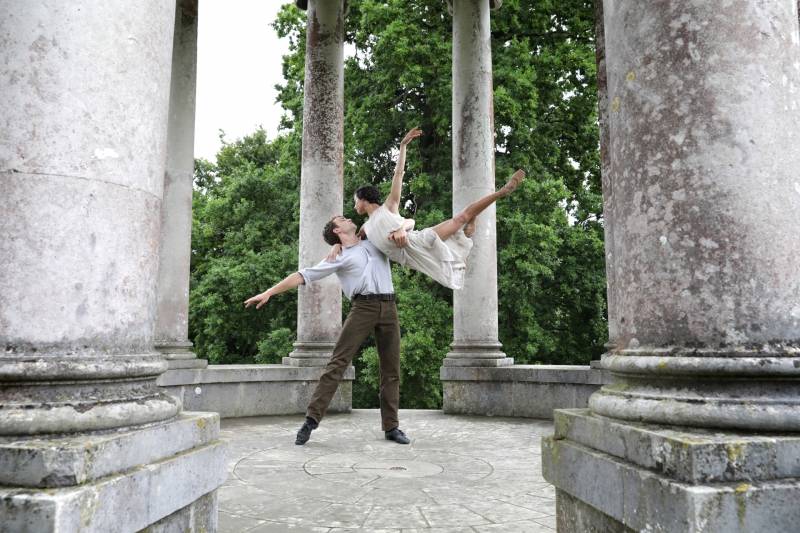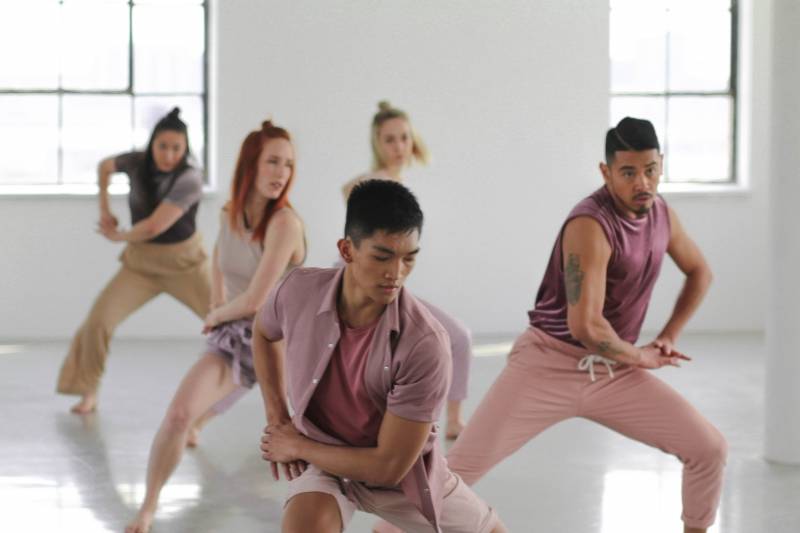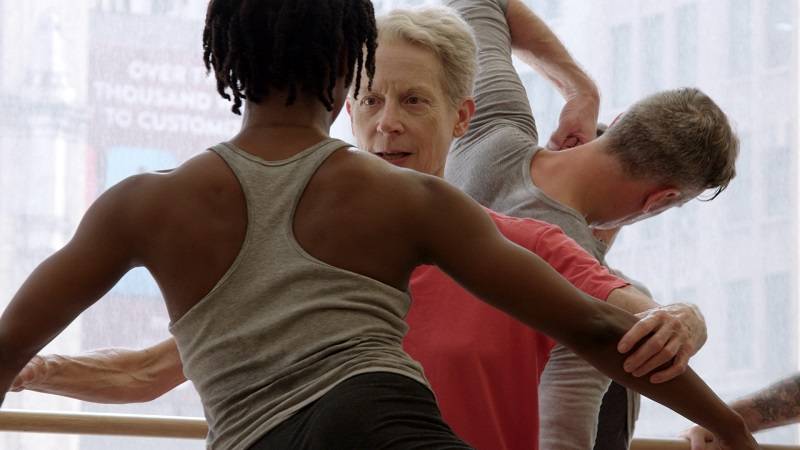The Flatlands Dance Film Festival will kick off Dance at Illinois’ 50th year celebration with two evenings of dance for camera screenings. With over 460 submissions this year from 59 countries, the Flatlands Dance Film Festival is the largest dance film festival in the Midwest based on submissions. It is one of only two film festivals in the country that is attached to a college, and it has been collaborating with the Department of Dance in the College of Fine and Applied Arts at the University of Illinois Urbana Champaign for five years. The festival was originally initiated by community member Mark Rhodes, formerly on the board of the Art Theater and current Associate Director of the Flatlands Dance Film Festival. His love for dance and cinema led him to Renee Wadleigh, Dance at Illinois Professor Emeritus who archives dance performances digitally, and Jan Erkert, current Head of the Department of Dance. According to the mission statement: “The Flatlands Dance Film Festival presents a variety of films and shorts dedicated to dance and performance, dance for camera, influential artists in the field, and the impact of dance across the world. The festival exemplifies Dance at Illinois’ commitment to promoting and expanding the role of dance in our community, recognizing the vast potential for the choreographic to infuse the cinematic.”
The festival opens on Friday, August 31st, with a pre-screening short film, Lil Buck with Icons of Modern Art. The pre-screening will begin at 6:55 p.m., to prelude the evening’s feature length film, If the Dancer Dances (shown in the top photo), a cinematic invitation into the intimate world of the dance studio, where three former members of the Merce Cunningham Dance Company teach Cunningham’s 1968 work, Rainforest, to the Stephen Petronio Company. The documentary film is timed to coincide with Cunningham’s centenary and showcases the mysteries of dance-making, the translation of embodied histories, and what it takes to keep a dance alive.
Saturday, September 1st at 7 p.m. will be the adjudicated Short Films Competition Program, highlighting fifteen short dance films from a variety of different countries. This year’s adjudicators include Jerry Carden, Lisa Dixon, and Fabiola Elias. Always an audience favorite, this evening exemplifies and redefines the choreographic possibilities of cinema, and the choreographic potential of dance itself.
I interviewed Rebecca Ferrell, Flatlands Dance Film Festival curator, to gain more insight into this year’s films, her curatorial inspiration and process, and the coinciding 50th anniversary celebration of Dance at Illinois and the Krannert Center for Performing Arts.
 Still from The Sun is God
Still from The Sun is God
SmilePolitely: How did you choose this year’s feature films?
Rebecca Ferrell: This year I was thinking about our 50th anniversary in Dance, so I wanted to know what connection our department had to a feature film that was out. I like things that are brand new, films that haven’t been shown in Chicago, Illinois, sometimes even the Midwest. I really want to get that Midwest premiere. I started thinking about Merce Cunningham since he did the very first artist’s residency here in Illinois with John Cage. I kept thinking, “Oh, I would love to have something interwoven with Merce Cunningham!”, and I found a lot of historical films and some documentaries, but nothing that was brand-new. Then I stumbled upon If the Dancer Dances and I completely fell in love because of the reconstruction element. In the film, the Stephen Petronio Company is in the process of recreating Rainforest and Dance at Illinois has a long history of reconstructions of master works. So, I thought, wow, this is so fantastic! It has Merce, it’s a reconstruction…this is exactly the film that really weaves together our history as well as where we’re going. I think that is the beauty of reconstructions, is seeing that history passed down and it brings new life into the piece. I love that.
SP: What do you think an audience that’s not familiar with dance might find interesting about If the Dancer Dances?
Ferrell: In If the Dancer Dances, we are in the studio the whole time. I haven’t seen another documentary so immersed in the process. I think that there’s a curiosity about dance. We’re so used to seeing the performance. We don’t get to show people the behind the scenes. Maybe a glimpse. Maybe you’ll see a dance reel or peek backstage when people are rehearsing, but you don’t have that total submersion in a rehearsal process. I think people are curious about what we do as artists. How are you learning this solo? And why does it have to be this exact? You hear re-stagers talk about the significance of a hand gesture, something that could seem so pedestrian to someone can carry so much weight in a piece. I think it’s very interesting. I hope the audience thinks that too! I think they will though! I think if you’re coming to this you’re already curious about how forms are blending. You’re already curious about how film and dance are coming together. Maybe you love one genre, maybe you love them both. But I think the collision is where special things happen. It really is blending the choreographic with the cinematic. That’s what the whole festival is about.
SP: What is the relationship between Lil Buck with Icons of Modern Art and If the Dancer Dances in the program?
Ferrell: My dance-making and art-making are always influenced when I go to a museum or when I see visual art. That is where I get a lot of my inspiration. I was recently back home in Richmond, Virginia, and Richmond has a brand-new Institute of Contemporary Art that just opened. One of their performances in September will be by Autumn Knight, who I worked with at Krannert Art Museum, so I was excited to see a gallery space where performance was integrated into the season. When I went to the ICA I started thinking about how performance is now part of the white box [art institutes]. You’re seeing more and more moving bodies; you’re seeing performance whether it’s music, dance, or a cross pollination of forms. When we talk about Contemporary Art, that cross pollination is Contemporary Art. And I was thinking about The Carters, how they just did their video for Ape Shit in the Louvre. I was very inspired by that and how pop culture and art have always been interwoven, but now I feel like it’s coming to the forefront.
I was just Googling “dance and museums” one day and I came across Lil Buck with Icons of Modern Art. Just seeing all his movement in this space [Lil’ Buck dancing in the art gallery] and then at one point Lil’ Buck touches the wall. I don’t know if he’s touching the art work or just the illusion of it, but these spaces that just seem so still and quiet are suddenly filled with so much movement and the boundaries were broken. There’s no security guards telling him not to get that close, there’s no alarms going off, it’s like he’s touching history. I was very inspired by that. And the connection to If the Dancer Dances is Andy Warhol. Andy Warhol made the sets for Merce Cunningham’s piece Rainforest. The silver balloons, the pillows that you see billowing, those pillows are actually at the Andy Warhol Museum in Pittsburgh. There’s such a long history of visual art and performance art coming together, that’s one reason why I put these two films together. They look at that collaboration of visual art and performance in very different ways. I think that’s what I really love about it, because even though Merce Cunningham’s company dissolved after he passed away, there is still a legacy that lives on. His art work still lives. The same with Andy Warhol. It’s inspiring to see that collaboration still live on, that there’s still pieces from Warhol and exact choreography from Cunningham.
SP: Can you talk about your curation process this year?
Ferrell: I’m showing the Lil’ Buck before I even do the intro for If the Dancer Dances. I like to do something surprising every year, so I try to play with format. Lil’ Buck will play at 6:55 p.m. I thought that would be kind of like a palate cleanser; you just came in from outside, you’re thinking about all this other stuff, maybe you’re reading the program or talking to your friends, and then we see this three minutes of a magnificent dancer dancing with these incredible pieces of art. Then, your brain has already been changed, you’re already thinking differently, so that’s what I want to try this year. It puts your mind in a different space. As an artist, I always like that. In my choreographic work, you walk into the world already. So, I want to see how that translates to this festival. I won’t do a big, “This is how you connect the two films” because I also don’t like to be spoon fed as an audience member what to think. I would love to be able to put those two pieces together by myself and think “why do those two films partner together?” I think as a curator, especially for a festival which runs like clock-work: the first night is a feature film, the second night is the short films, how are we tweaking the programming so that it doesn’t feel the same? So that there’s not a staleness to it? That there’s still something unexpected? Besides what the film is or the context or any of that, what else about it changes the experience you’re having?
 Still from Between the Line
Still from Between the Line
SP: Is there a relationship between the feature films and the short films?
Ferrell: No, I keep those programs separate. I want it to feel different both nights. The shorts really feel different from each other, they could be as short as two minutes or as long as fifteen. And we’ll get everything from stop-motion animation to huge budget films. The competition submissions are already quite varied, it’s up to the adjudicators to rate the films. When they’re scoring a film, they are thinking about: choreography, cinematography, and overall effectiveness. The adjudicators score the films one through five. After that our assistant director, Mark Rhodes, will take those scores and do the calculations. The adjudicators don’t see what the others are scoring. We make sure that that is separate, because the adjudicators are selected for their own individual aesthetic. It’s great to see their individual aesthetics shine because then the programming is so diverse. From there, Mark takes the scoring and then we come up with 90 minutes of programming. This year there are fifteen films in those 90 minutes.
The short films feel so different from the feature, which takes a long time to curate and sometimes there’s a film you really want but the timing isn’t right and there’s all sorts of things that can happen. There was a film that I was in love with called American Tap, but it had just premiered somewhere else and can’t be shown anywhere for a few months, so we are going to do a special screening of it in the spring right before Michelle Dorrance comes to the Krannert Center. She’s featured in the film and we thought that it would be great to screen prior to her performance at Krannert Center. We’re very excited! It’s Krannert Center’s 50th anniversary this year as well so it’s nice to combine our efforts in the spring.
SP: How do you feel the Flatlands Dance Film Festival impacts our community?
Ferrell: Accessibility is huge. That’s why I really love this festival, because we’re showing fifteen films and six of them are from the United States. That’s pretty incredible that we’re able to show filmmaker’s works from Brazil, Switzerland, Spain, here in Champaign-Urbana. They’re able to share their art work. We’re living in a digital age. How great is it for this community to see artwork from all around the globe all within 90 minutes? That’s inspiring. And I love that the audience members are always different. It’s not just our dancers, or people from FAA. Its people from all over the C-U community. The Flatland’s Dance Film Festival was started by a member of our community. It grew from a community want and that’s what I find very inspiring.
Both evenings will be screened at the Spurlock Museum 600 S. Gregory Street in Urbana. Tickets are $10/general admission and $5/students and seniors. Tickets are available at the door. For more information please contact Rebecca Ferrell [email protected] or 217-300-1193.
Photos provided by Dance at Illinois








